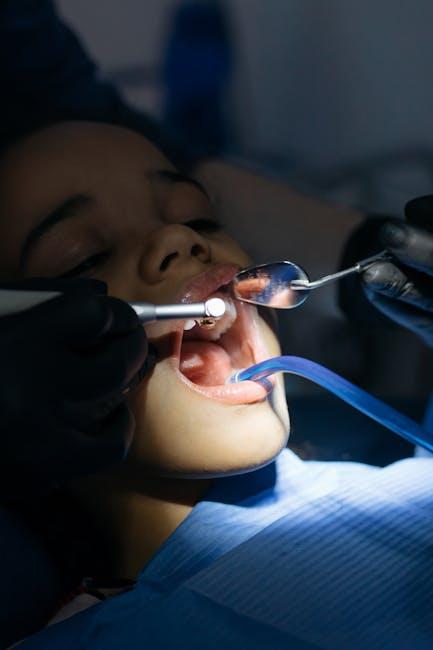1 in 3 Kids Has Dental Problems, Poll Finds – U.S. News & World Report
According to a recent poll cited by U.S. News & World Report, nearly one in three kids in the United States suffers from dental problems. This alarming statistic shines a spotlight on the importance of pediatric oral health, revealing how common dental issues are among children and underscoring the need for early intervention. In this article, we’ll delve into the details of the poll, discuss common dental problems affecting kids, and provide practical tips to help parents safeguard their child’s smile.
The Scope of the Problem: Understanding Kids’ Dental Health
Dental health is a critical aspect of overall wellbeing, especially in childhood when habits and conditions can shape oral health for life. The poll from U.S. News & World Report highlights:
- Prevalence: About 33% of children under 12 have at least one dental issue.
- Common Conditions: Tooth decay (cavities), gingivitis (gum inflammation), and enamel defects.
- Impact: These problems can lead to pain, difficulty eating, and infections if untreated.
Key Statistics from the Poll
| Age Group | % with Dental Problems | Most Common Issue |
|---|---|---|
| 2-5 years | 28% | Tooth Decay |
| 6-9 years | 35% | Gum Disease |
| 10-12 years | 37% | Enamel Defects |
What Causes Dental Problems in Children?
Several factors contribute to why children develop dental problems. Some are lifestyle-related, while others involve access to care or genetic predisposition:
- Poor Oral Hygiene: Inadequate brushing and flossing habits lead to plaque buildup and cavities.
- Sugar Consumption: Frequent intake of sugary snacks and drinks feeds bacteria that damage teeth.
- Lack of Regular Dental Visits: Missing checkups delays early detection and treatment.
- Limited Access to Dental Care: Socioeconomic barriers can reduce timely dental care.
- Fluoride Deficiency: Not getting enough fluoride, either from water or toothpaste, weakens enamel.
- Genetic Factors: Some children are predisposed to enamel defects or gum disease.
Signs and Symptoms to Watch For
Parents and caregivers should be vigilant for the common signs of oral health issues in kids. Early diagnosis can prevent complications:
- Tooth sensitivity or pain
- Visible holes or pits in teeth
- Red, swollen, or bleeding gums
- Bad breath that doesn’t go away
- Difficulty chewing or eating
- Discolored or damaged teeth
Practical Tips to Prevent Dental Problems in Kids
Good dental health begins at home and extends to professional care. Here are effective strategies to minimize your child’s risk of dental issues:
1. Establish a Consistent Oral Hygiene Routine
- Brush teeth twice a day with fluoride toothpaste.
- Teach children to floss daily starting as soon as teeth touch.
- Use child-friendly toothbrushes and replace every 3 months.
2. Monitor Diet and Snacking
- Limit sugary snacks, candies, and sodas.
- Encourage water intake and healthy foods like fruits and vegetables.
- Avoid sticky or chewy sweets that stick to teeth longer.
3. Schedule Regular Dental Visits
- Begin dental visits by the child’s first birthday or when the first tooth appears.
- Maintain biannual dental checkups and professional cleanings.
- Discuss sealants and fluoride treatments with your dentist for added protection.
4. Promote Fluoride Exposure
- Use fluoride toothpaste appropriate to age.
- Discuss local water fluoride levels with your dentist or health department.
Real-Life Challenges: Case Study
Case: Sarah, a mother of two young kids, noticed her 5-year-old son complaining about toothaches but didn’t prioritize dental appointments due to busy schedules. Within months, the child developed multiple cavities requiring fillings and extra dental visits, which could have been avoided with earlier routine care.
This example highlights how everyday challenges can lead to neglecting oral health, and why awareness is crucial.
The Importance of Early Education and Awareness
Educating parents, schools, and caregivers on pediatric dental problems is essential. Schools can include oral hygiene lessons, and community outreach programs can offer free screenings. Early awareness helps reduce the national prevalence.
Conclusion: Protecting Your Child’s Smile Starts Today
The recent U.S. News & World Report poll revealing that 1 in 3 kids in the U.S. faces dental problems is a wake-up call for families and communities. While these statistics may appear daunting, most childhood dental problems are preventable with proper care, education, and regular dental visits. Prioritizing your child’s oral health not only safeguards their beautiful smile but also promotes overall wellness and confidence. Start fostering good habits today—because a healthy smile is a happy smile.


